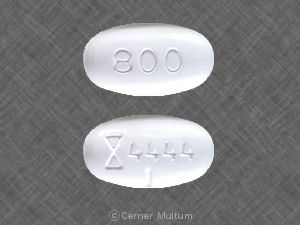Gabapentin is structurally related to GABA. However, it does not bind to GABAA or GABAB receptors, and it does not appear to influence synthesis or uptake of GABA.
High affinity gabapentin binding sites have been located throughout the brain; these sites correspond to the presence of voltage-gated calcium channels specifically possessing the alpha-2-delta-1 subunit.

This channel appears to be located presynaptically, and may modulate the release of excitatory neurotransmitters which participate in epileptogenesis and nociception.
Mechanism of Gabapentin Action
The precise mechanisms by which gabapentin produces its analgesic and antiepileptic actions are unknown. Gabapentin is structurally related to the neurotransmitter gamma-aminobutyric acid (GABA) but has no effect on GABA binding, uptake, or degradation. In vitro studies have shown that gabapentin binds with high-affinity to the α2δ subunit of voltage-activated calcium channels; however, the relationship of this binding to the therapeutic effects of gabapentin is unknown.
Pharmacokinetics
All pharmacological actions following gabapentin administration are due to the activity of the parent compound; gabapentin is not appreciably metabolized in humans.
Oral Bioavailability
Gabapentin bioavailability is not dose proportional; i.e., as dose is increased, bioavailability decreases. Bioavailability of gabapentin is approximately 60%, 47%, 34%, 33%, and 27% following 900, 1200, 2400, 3600, and 4800 mg/day given in 3 divided doses, respectively. Food has only a slight effect on the rate and extent of absorption of gabapentin (14% increase in AUC and Cmax).
Distribution
Less than 3% of gabapentin circulates bound to plasma protein. The apparent volume of distribution of gabapentin after 150 mg intravenous administration is 58±6 L (mean ±SD). In patients with epilepsy, steady-state predose (Cmin) concentrations of gabapentin in cerebrospinal fluid were approximately 20% of the corresponding plasma concentrations.
Elimination
Gabapentin is eliminated from the systemic circulation by renal excretion as unchanged drug. Gabapentin is not appreciably metabolized in humans.
Gabapentin elimination half-life is 5 to 7 hours and is unaltered by dose or following multiple dosing. Gabapentin elimination rate constant, plasma clearance, and renal clearance are directly proportional to creatinine clearance. In elderly patients, and in patients with impaired renal function, gabapentin plasma clearance is reduced. Gabapentin can be removed from plasma by hemodialysis.
Absorption
Variable, from proximal small bowel by L-amino transport system; saturable process; dose-dependent
Vd: 58 ± 6 L; CSF concentrations are ~20% of plasma concentrations
Metabolism
Not metabolized
Excretion
Proportional to renal function; urine (as unchanged drug)
Clearance: Apparent oral clearance is directly proportional to CrCl: Clearance in infants is highly variable; oral clearance (per kg) in children <5 years of age is higher than in children ≥5 years of age
Time to Peak
Immediate release: Infants 1 month to Children 12 years: 2 to 3 hours; Adults: 2 to 4 hours; Extended release: 8 hours
Half-Life Elimination
Infants 1 month to Children 12 years: 4.7 hours
Adults, normal: 5 to 7 hours; increased half-life with decreased renal function; anuric adult patients: 132 hours; adults during hemodialysis: 3.8 hours
Protein Binding
<3%